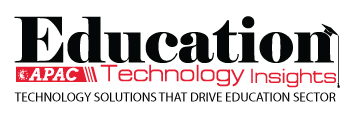THANK YOU FOR SUBSCRIBING
Be first to read the latest tech news, Industry Leader's Insights, and CIO interviews of medium and large enterprises exclusively from Education Technology Insights
The Impact of Generative Artificial Intelligence in Higher Education
Jean Kotsiovos, PhD, Graduate IT Faculty, Purdue Global
The Impact and Implementation of Generative AI Tools in Teaching Jean Kotsiovos, PhD, Graduate IT Faculty, Purdue Global
Jean Kotsiovos, PhD, Graduate IT Faculty, Purdue Global
I spent the past two years researching and implementing generative artificial intelligence (GAI) tools in my teaching. These tools helped improve my instructional materials and have significantly impacted my teaching. Artificial intelligence (AI) has been around for many years. This technology can perform tasks that require human intelligence, such as self-driving cars and robotic systems. GAI is a subset of AI capable of producing new content based on data, including text, images, video and audio. The first GAI tool, Open AI's GPT-3, was released in 2020.
The educational landscape in higher education has changed since the release of GAI tools. GAI has many benefits that support teaching and learning. Educators can use the tools to create a personalized educational experience for students. Many textbook publishers have labs incorporating personalized learning where you can adjust course materials, difficulty levels and assessment questions to meet student needs.
Educators can improve student engagement by incorporating interactive virtual tutors in the classroom. Virtual tutors provide students with 24/7 assistance and can be accessed from an LMS, website, or Google site. It offers immediate support by answering questions about the syllabus and course materials, explaining complex concepts and providing assignment feedback. Since virtual tutors can answer routine questions, educators can focus more on students' higher-level questions.
GAI tools can streamline course development, reducing the time and effort of creating course materials. GAI tools assist with the development of course outcomes, lesson plans, lectures, readings, practice activities, assessments and rubrics. I reduced my time to create a course by over 50%. This time-saving allows educators to spend more time building relationships and engaging with the students. This time savings benefits institutions as they can launch new programs quickly, which could provide them with a competitive advantage.
“Focus on developing resources that promote student success and engagement. Don’t be afraid to experiment and find new innovative approaches to teaching and learning!”
Engaging courses are much easier to create using GAI tools. Educators can create engaging videos, presentations and multimedia activities without the technical knowledge required for other tools. I created a welcome video and tutorials for my students in under five minutes without assistance. This approach is helpful because I can create video tutorials to explain difficult concepts without relying on advanced technical knowledge and resources from other team members.
There are challenges with using GAI tools, as the content produced can have inaccuracies or biases. Students have been using GAI to complete their assignments, which raises questions about academic integrity. Educators worry that it may hinder the development of critical thinking and problem-solving skills. I have modified my assignments to minimize this concern and have included hands-on projects, oral presentations, demonstrations, and experiential learning projects. I recommend using proctoring tools to maintain integrity for online exams. These tools prevent students from accessing GAI tools and opening a browser or document once they start an exam.
As you implement GAI at your institution, consider creating guidance documents, developing best practices and training staff on the various GAI tools. That is a significant first step! Explore the free tools and see how they can benefit your students. Create engaging and interactive course materials that support the multiple learning styles of your students. Focus on developing resources that promote student success and engagement. Don’t be afraid to experiment and find new innovative approaches to teaching and learning!
Read Also
Empowering Educators through Purposeful, Connected and Transformative Learning
Empowering Students to Lead: A New Vision for Civic Learning
The Director's Playbook: Strategic Digital Transformation in Rual Hyper-Growth Districts
The Art and Architecture of Student Support
From At-Risk to At-Promise: The Language Revolution Higher Education Needs
Teaching Tomorrow: How Western Governors University Is Redefining Teacher Preparation

I agree We use cookies on this website to enhance your user experience. By clicking any link on this page you are giving your consent for us to set cookies. More info





















